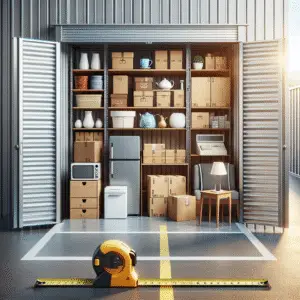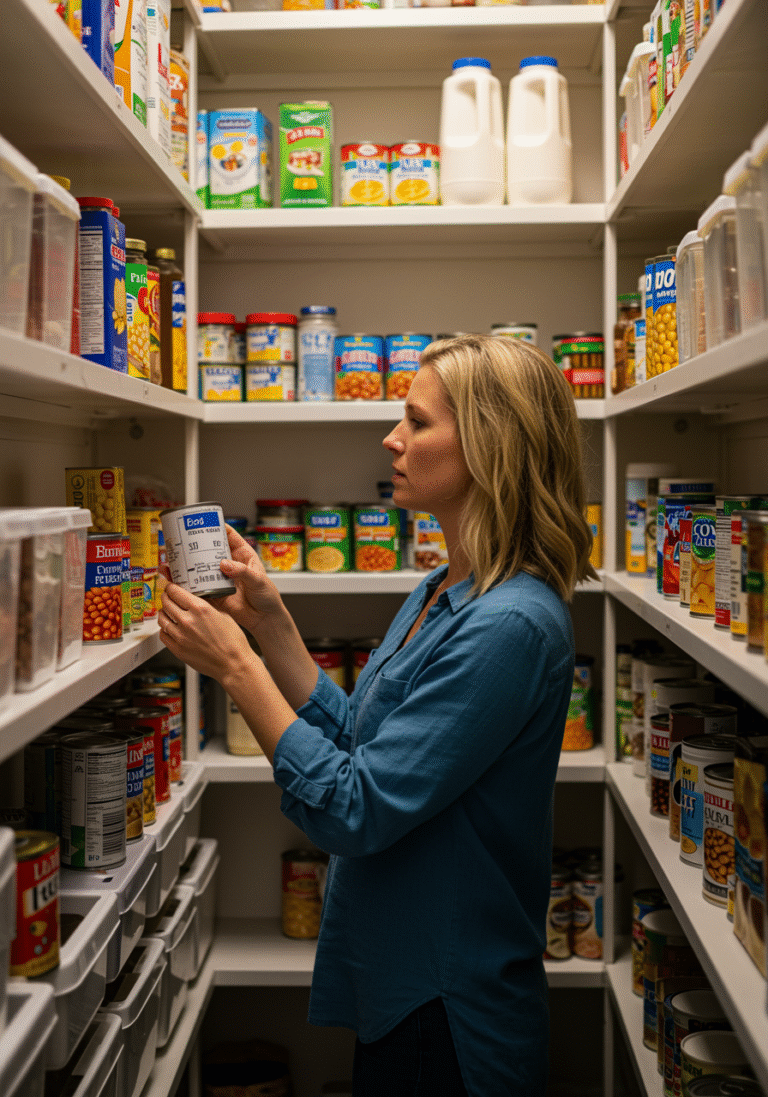5 Best Climate-Controlled Storage Units for Sensitive Items
Your cherished family heirlooms sit dissolving in moisture. Vintage electronics corrode silently in sweltering heat. That irreplaceable artwork warps beyond recognition. These nightmares become reality for countless people who choose standard storage units for items that desperately need climate-controlled protection.
Climate-controlled storage has revolutionized the way we preserve our most valued possessions, creating sanctuaries where temperature and humidity remain constant regardless of external weather conditions. Whether you’re storing antique wooden furniture, sensitive electronics, or priceless artwork, the right storage environment can mean the difference between preservation and deterioration. This comprehensive guide explores the top climate-controlled storage options in 2025, helping you find the perfect solution for your most delicate treasures.
What Are Climate-Controlled Storage Units?
Climate-controlled storage units are specialized storage spaces designed to maintain consistent temperature and humidity levels year-round, typically keeping temperatures between 55°F and 85°F with humidity levels around 55%. Unlike standard storage units that fluctuate with outdoor conditions—potentially reaching freezing temperatures in winter or sweltering heat exceeding 100°F in summer—climate-controlled facilities utilize HVAC systems, dehumidifiers, and insulation to create stable environments. These units are typically housed within larger indoor facilities with additional insulation, further protecting against external weather variations and environmental contaminants.
The regulation process involves sophisticated climate control systems that constantly monitor internal conditions, making automatic adjustments to maintain optimal preservation environments. Many modern facilities now employ smart technology that allows remote monitoring and alerts if conditions deviate from preset parameters. This constant regulation creates a protective bubble around your possessions, shielding them from the damaging effects of temperature extremes and humidity fluctuations.
Items That Require Climate-Controlled Storage
Electronics and Appliances
Modern electronics contain sensitive components that can be permanently damaged by temperature extremes and humidity. Circuit boards can corrode in humid conditions, while extreme heat can warp internal components and degrade battery performance. Devices like computers, televisions, stereo equipment, and vintage electronics are particularly vulnerable to these environmental stressors. Even modern appliances with digital interfaces benefit significantly from climate-controlled storage, as moisture can seep into control panels and cause short circuits or display malfunctions over time.
Wooden Furniture and Antiques
Wood naturally expands and contracts with changes in humidity, causing warping, cracking, and joint separation over time. Antique furniture is especially vulnerable due to its age and the traditional construction methods used. Fluctuating environmental conditions can degrade finishes, loosen glue joints, and cause veneer to separate or bubble. Pieces with inlay work or marquetry are particularly at risk as different wood species expand and contract at different rates, creating stress at material boundaries.
Important Documents, Books, and Photographs
Paper goods are highly susceptible to humidity damage, with moisture causing discoloration, mold growth, and structural weakening. Historical documents, irreplaceable family photographs, and valuable book collections require stable environments to prevent yellowing, brittleness, and deterioration. The organic materials in paper products make them natural targets for mold and mildew, which can spread rapidly in humid conditions and cause permanent damage or destruction within weeks of improper storage.
Clothing and Textiles
Fabrics absorb moisture from the air, making them prime targets for mold and mildew growth in humid environments. Vintage clothing, wedding dresses, heirloom quilts, and seasonal wardrobes can develop musty odors, discoloration, and fiber breakdown when exposed to inappropriate storage conditions. Temperature fluctuations can also affect dyes, causing colors to fade or bleed between different fabric sections, while extreme heat can damage synthetic fibers and natural materials alike.
Musical Instruments and Artwork
Musical instruments, particularly those made from wood like pianos, violins, and guitars, require stable humidity levels to maintain their structural integrity and sound quality. Canvas paintings can stretch or sag with humidity changes, and pigments may crack or fade when exposed to extreme temperatures. Sculptures in materials like clay, wax, or mixed media are similarly vulnerable to environmental damage. For professional musicians and art collectors, temperature-controlled storage for these high-value items isn’t a luxury—it’s essential preservation.
Factors to Consider When Choosing Climate-Controlled Storage Units
Temperature and Humidity Consistency
Not all climate-controlled units offer the same level of environmental stability. Premium facilities maintain tight temperature ranges (typically 65-75°F) and precise humidity control (45-55%), while budget options might allow wider variations. Ask facilities about their specific parameters and how frequently they monitor conditions. The best providers will have backup generators to maintain climate control during power outages and regular maintenance schedules for their HVAC systems, ensuring continuous protection regardless of external circumstances.
Security Features
Valuable items requiring climate control often have significant monetary or sentimental value, making security a critical consideration. Look for facilities with layered security systems including 24/7 video surveillance, individual unit alarms, electronic gate access, and on-site security personnel. Modern facilities increasingly offer biometric access controls and real-time security monitoring through dedicated apps, allowing you to check on your unit’s status remotely and receive immediate notifications of any unauthorized access attempts.
Accessibility and Convenience
Consider how frequently you’ll need to access your items and whether the facility’s hours accommodate your schedule. Some premium climate-controlled facilities offer 24/7 access with advanced booking, while others restrict hours to maintain security. Indoor climate-controlled units typically require navigating through buildings and potentially using elevators, which might be inconvenient for frequent access. Evaluate drive-up accessibility, loading dock availability, and whether the facility provides carts or dollies to move your items from vehicle to storage unit.
Unit Size and Availability
Climate-controlled options usually come in various sizes, from small locker-style units perfect for document storage to warehouse-sized spaces for business inventory or large collections. Availability of specific unit sizes can vary significantly between locations, with small climate-controlled storage units often in highest demand. Planning ahead is crucial—the best facilities often maintain waiting lists for their most popular unit sizes and configurations.
Costs and Contract Flexibility
Climate-controlled storage typically costs 25-50% more than standard units, reflecting the additional operational expenses of maintaining stable environments. Prices vary based on location, unit size, and quality of climate control systems. Consider whether the facility requires long-term commitments or offers month-to-month options. Many providers now offer discounts for prepayment or automatic billing, and some have implemented dynamic pricing models that adjust rates based on seasonal demand and occupancy rates.
5 Best Climate-Controlled Storage Units for Sensitive Items
1. Public Storage
Public Storage has dramatically expanded its climate-controlled offerings by 2025, now featuring precision environmental control in over 80% of its locations nationwide. Their climate-controlled self-storage units maintain temperatures between 65-80°F with humidity levels consistently below 60%, making them suitable for most sensitive items. Their buildings feature enhanced insulation and air filtration systems that minimize dust and airborne contaminants, providing additional protection for delicate items like electronics and documents.
The company has invested heavily in accessibility improvements, with extended access hours and convenient interior layouts designed for easy navigation with loaded carts. Their security infrastructure includes AI-enhanced surveillance systems with facial recognition technology and individual unit monitoring. While Public Storage commands premium prices in metropolitan areas, it offers competitive rates in suburban and rural locations, with flexible month-to-month contracts and substantial discounts for quarterly or annual prepayment.
2. Extra Space Storage
Extra Space Storage has positioned itself as the premium option for climate control, offering the most precise environmental management in the industry. Their temperature-controlled storage for electronics provides consistent temperatures between 68-72°F and humidity levels maintained at 50±3%—specifications that exceed museum conservation standards. This precision comes through their proprietary ClimateLock system that monitors conditions in real-time and makes micro-adjustments to maintain optimal preservation environments.
Accessibility is a standout feature, with smart-entry systems allowing 24/7 access through their secure mobile app, complete with personalized entry codes and activity logging. Their units feature enhanced interior lighting, convenient electrical outlets for testing electronics during visits, and premium storage consultation services for high-value collections. Although commanding the highest prices in our comparison, Extra Space justifies the premium with unmatched environmental consistency and extensive insurance options specifically designed for valuable collections.
3. CubeSmart
CubeSmart has revolutionized the affordable climate-controlled storage market with its innovative hybrid cooling systems that maintain stable environments while reducing energy costs. Their standard climate-controlled units maintain conditions between 65-78°F with humidity control that keeps levels below 65%—sufficient for most household items and moderately sensitive materials. For items requiring stricter environmental controls, their premium units offer narrower temperature ranges and enhanced humidity control at modest additional cost.
The company has earned industry recognition for its exceptional facility cleanliness, with dedicated maintenance teams conducting daily inspections and environmental testing. Their ClimateRewards program offers progressive discounts based on rental duration, with loyal customers earning up to 25% off after the first year. CubeSmart specializes in mid-sized units ideal for household storage, though the availability of specialized humidity-controlled storage units can be limited in high-demand locations.
4. Life Storage
Life Storage has distinguished itself with specialized climate zones designed for specific item categories. Their Preservation Plus units offer museum-quality controls for artwork and antiques, maintaining narrow temperature ranges of 65-70°F and humidity levels of 45-50%. Standard climate-controlled units provide more economical options while still maintaining consistent temperatures between 60-80°F. Their proprietary Environmental Monitoring Platform sends real-time alerts to both facility managers and customers if conditions deviate from specified parameters.
Customer service remains Life Storage’s strongest differentiator, with dedicated storage consultants who provide personalized recommendations based on what you’re storing. Their unique “Collection Care” insurance offers customized coverage for specific item categories like musical instruments, wine collections, and antique furniture. While their network is smaller than some competitors, their strategic locations near cultural centers and affluent communities make them ideal for those storing high-value collections.
5. U-Haul Storage
U-Haul has dramatically expanded its climate-controlled offerings with innovative modular facilities that can be deployed in previously underserved markets. Their standard climate-controlled units maintain temperatures between 65-85°F—a wider range than premium competitors but sufficient for most household items. Their unique advantage lies in their extensive geographical coverage, bringing affordable climate-controlled mini storage to rural and suburban areas where options were previously limited.
The company’s self-service focus translates to competitive pricing, typically 10-20% below market averages for comparable climate-controlled space. Their flexible rental terms require no long-term commitments, with easy online booking and management through their comprehensive mobile app. While their climate control specifications may not match the precision of premium providers, their affordable rates and convenient location network make them ideal for budget-conscious consumers who still need basic environmental protection.
Comparison Table of the 5 Best Providers
| Provider | Temperature Range | Humidity Control | Security Features | Access Hours | Price Range | Specialty Storage |
|---|---|---|---|---|---|---|
| Public Storage | 65-80°F | Below 60% | AI surveillance, individual unit monitoring | 6 am-10 pm daily | $$$ | Document storage, electronics |
| Extra Space Storage | 68-72°F | 50±3% | Biometric access, 24/7 monitoring | 24/7 via app | $$$$ | Wine storage, electronics, art |
| CubeSmart | 65-78°F | Below 65% | Video surveillance, electronic access | 6 am-10 pm daily | $$ | Household goods, furniture |
| Life Storage | 60-80°F (standard) 65-70°F (premium) |
45-60% | Motion sensors, 24/7 monitoring | 7 am-9 pm daily | $$$ | Antiques, musical instruments |
| U-Haul Storage | 65-85°F | Below 70% | Digital surveillance, coded access | 24/7 at select locations | $ | Budget climate control, rural locations |
Tips for Storing Sensitive Items in Climate-Controlled Units
Prepping and Packing Items Properly
Proper preparation significantly enhances the effectiveness of climate-controlled storage. Clean all items thoroughly before storage to remove dust, oils, and residues that could attract pests or cause deterioration over time. For electronics, remove batteries to prevent leakage and corrosion, and consider using desiccant packets for additional moisture protection. Wrap wooden furniture in breathable materials like cotton sheets rather than plastic, which can trap moisture and encourage mold growth despite climate controls.
Document storage requires acid-free boxes and archival-quality sleeves for photographs and important papers. For clothing, clean fabric items according to the manufacturer’s instructions and store in cotton garment bags rather than vacuum-sealed plastic, which can compress fibers and trap residual moisture. When storing artwork, use acid-free materials for wrapping, avoid direct contact between pieces, and store vertically to prevent pressure damage.
Monitoring Unit Conditions
Even with professional climate control, it’s wise to independently verify conditions in your storage unit, especially for extremely valuable or sensitive items. Affordable digital hygrometers can track temperature and humidity fluctuations, with modern versions offering Bluetooth connectivity and smartphone alerts. Position these devices at different heights within your unit, as conditions can vary between floor level and ceiling. Some facilities permit the installation of wireless environmental monitors that provide continuous data logging accessible through mobile apps.
Schedule regular visits to check on your belongings and look for early warning signs of environmental issues like condensation, musty odors, or visible moisture. Document the condition of sensitive items with dated photographs to track any changes over time. If you notice environmental inconsistencies, report them immediately to facility management for prompt resolution.
Regular Check-ins and Maintenance
Long-term climate-controlled storage requires periodic maintenance to ensure optimal preservation. For wooden furniture, consider applying appropriate conditioners or polishes annually to prevent drying and cracking. Electronics benefit from occasional power-up testing to ensure components remain functional and to prevent capacitor deterioration. Clothing should be refolded along different lines periodically to prevent permanent creases and fiber stress.
For long-term climate controlled storage of documents and photographs, consider rotating items in storage boxes to ensure even exposure to environmental conditions. Musical instruments may require professional maintenance visits despite climate control, particularly string instruments that need tension adjustments. Creating a maintenance calendar with specific tasks for different item categories helps ensure nothing is overlooked.
Insurance Considerations for High-Value Items
Standard storage insurance often provides inadequate coverage for valuable items requiring climate control. Review your homeowner’s or renter’s insurance policy to understand existing off-premises coverage limitations. Consider specialized insurance for collections or high-value items that offers full replacement value rather than depreciated coverage. Document everything with detailed inventory lists, purchase receipts, professional appraisals, and high-resolution photographs from multiple angles.
Many premium climate-controlled facilities offer enhanced insurance options specifically designed for sensitive items, with coverage for environmental damage despite climate control. These specialized policies typically cover gradual deterioration—a crucial benefit since standard policies often exclude damage that occurs over time rather than from specific incidents. Verify that your policy covers the full journey of your items, including transportation to and from the storage facility.
Frequently Asked Questions (FAQs)
How much more expensive is climate-controlled storage?
Climate-controlled storage typically costs 25-50% more than standard units, with premium facilities commanding even higher premiums. In 2025, average costs range from $120-200 monthly for a standard 10’x10′ climate-controlled unit, depending on location and quality of environmental controls. Urban areas with high demand can see prices reaching $300+ for the same size unit with premium climate specifications. Many facilities offer promotional rates for new customers, seasonal discounts during lower-demand periods, and substantial savings for prepayment.
Is climate control worth it for short-term storage?
For truly sensitive items, climate control remains valuable even for short-term storage of 1-3 months, particularly during seasonal extremes. Summer storage during high humidity periods or winter storage in regions with freezing temperatures presents specific risks even over short durations. Electronics, musical instruments, artwork, and precise mechanical items benefit from climate control even during brief storage periods. For more resilient items, standard storage may suffice for very short terms during moderate weather conditions.
Can climate control prevent mold or mildew completely?
While climate control dramatically reduces mold and mildew risk, it cannot guarantee complete prevention if items are stored improperly. Items placed into storage with existing moisture, dirt, or organic residues may still develop mold despite controlled environments. Proper preparation—ensuring items are clean and completely dry before storage—remains essential. Premium facilities with advanced air filtration systems that remove airborne mold spores provide the highest level of protection, particularly important for humidity-controlled storage units housing sensitive collections.
Do all facilities offer the same temperature range?
Temperature specifications vary significantly between providers and even between different unit types within the same facility. Budget climate-controlled facilities typically maintain temperatures between 55-85°F, while premium providers offer narrower ranges of 65-75°F. Specialty storage for wine collections, musical instruments, or fine art may offer even more precise temperature controls, maintaining ranges as narrow as ±2°F. Always request specific written temperature and humidity specifications rather than relying on the generic term “climate-controlled.”
Finding Your Perfect Climate-Controlled Storage Solution
The protection of your valuable and sensitive possessions demands more than just any storage space—it requires a consistent environment that only quality climate-controlled storage can provide. From preserving family heirlooms to protecting expensive electronics, these specialized facilities offer the stable conditions essential for long-term preservation. While premium climate control comes at a higher price point, the investment pales in comparison to the cost of replacing damaged or deteriorated items with sentimental or historical value.
As you evaluate the top providers we’ve highlighted, consider your specific storage needs, budget constraints, and the sensitivity of your items. Extra Space Storage offers unmatched precision for the most demanding storage requirements, while budget-conscious consumers might find U-Haul’s widespread availability and lower costs more attractive. For those storing truly irreplaceable items, the environmental consistency and specialized insurance options from Life Storage provide exceptional peace of mind.
Remember that proper preparation and periodic maintenance remain essential partners to climate control technology. Take the time to clean, properly package, and regularly check on your stored possessions. By combining quality climate-controlled facilities with proper storage techniques, you can preserve your most precious items for years—or even generations—to come.












